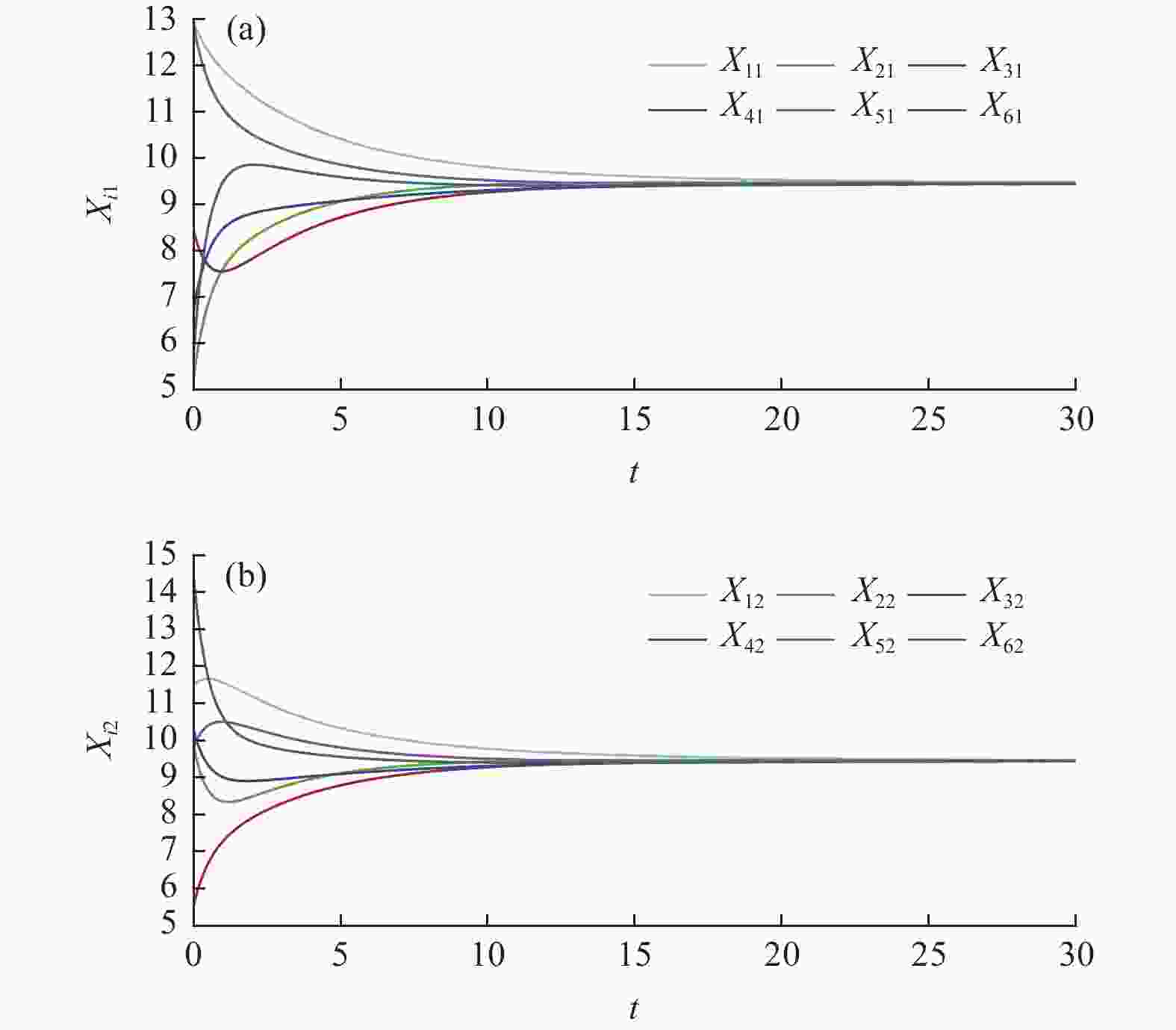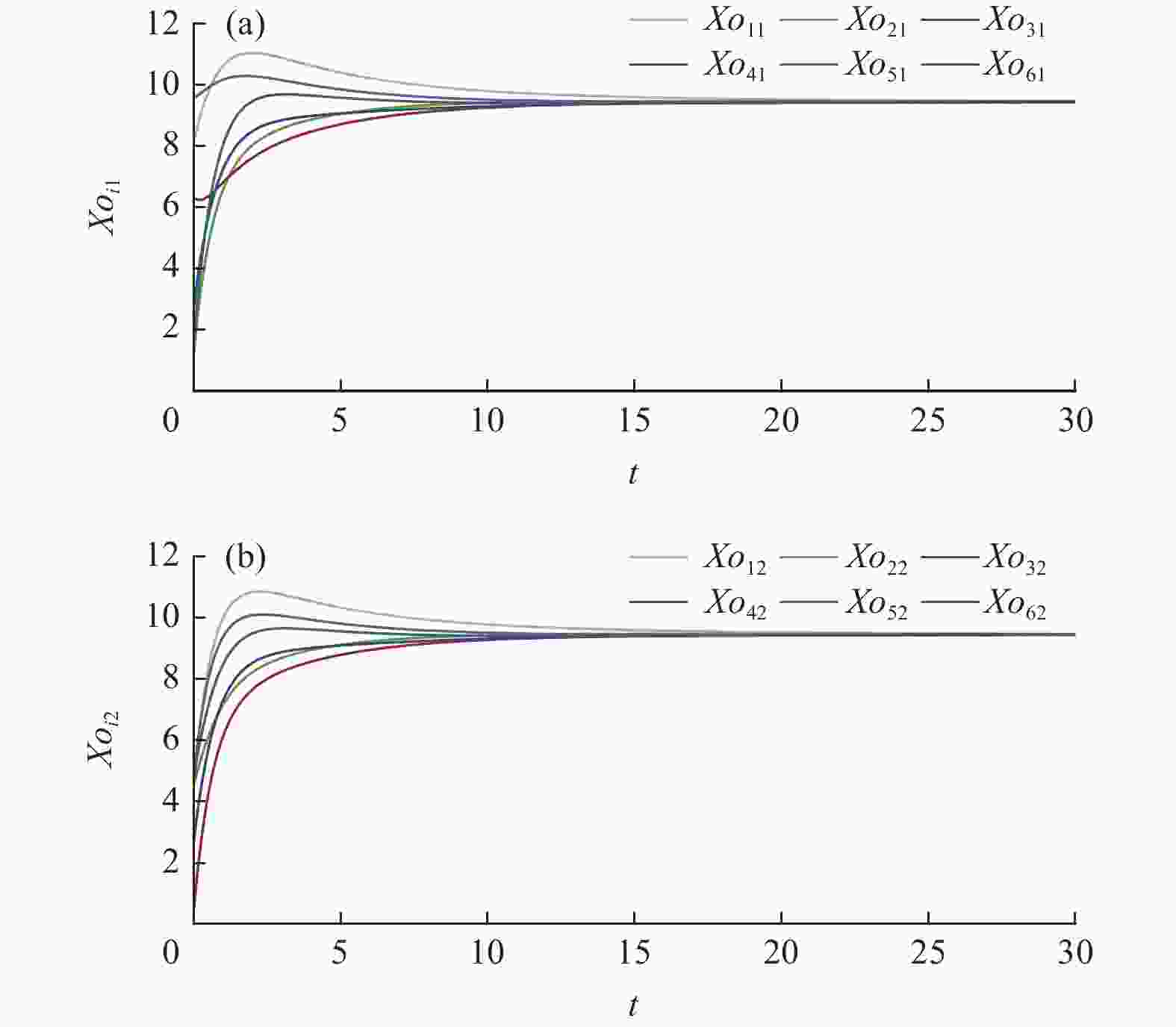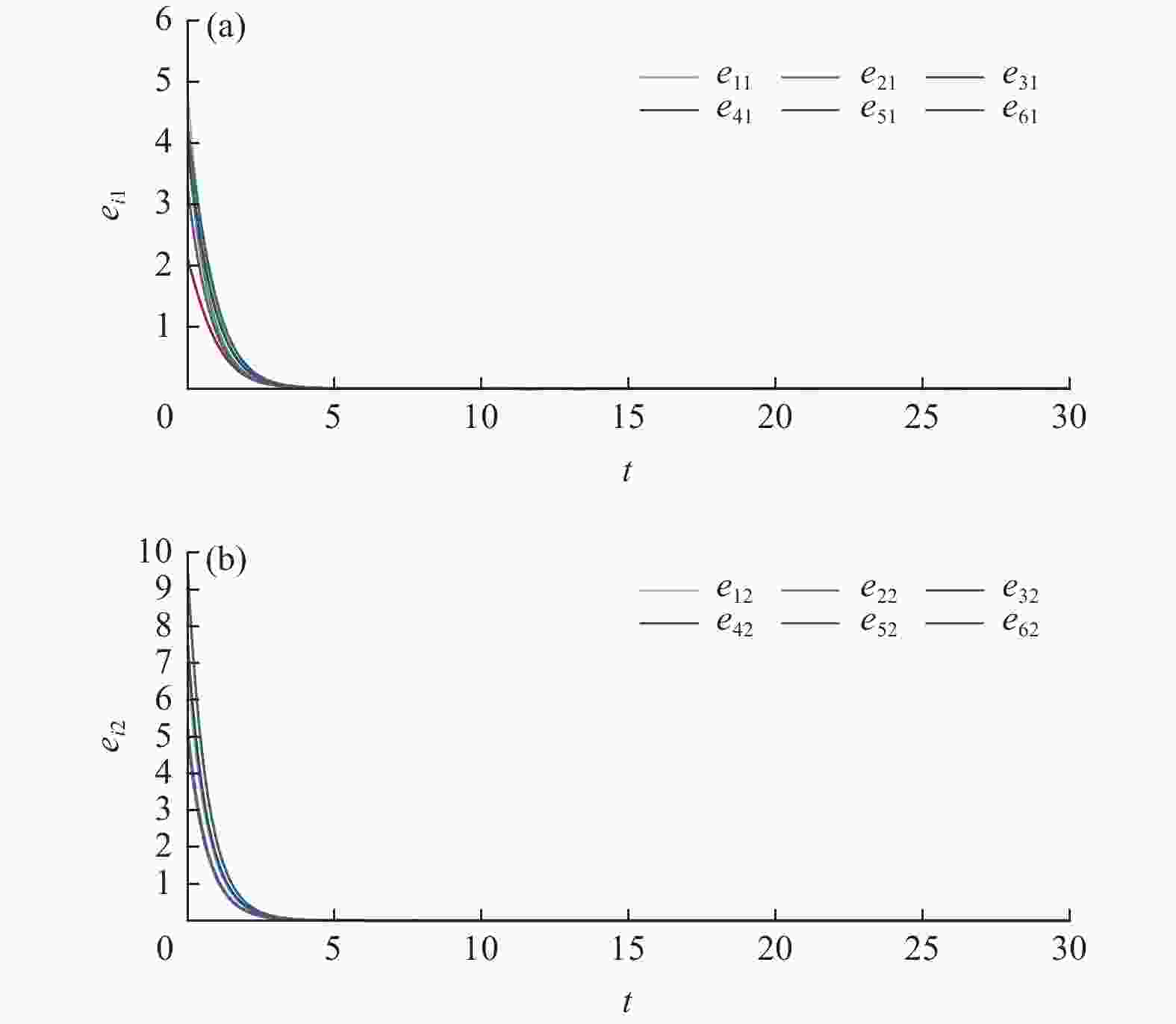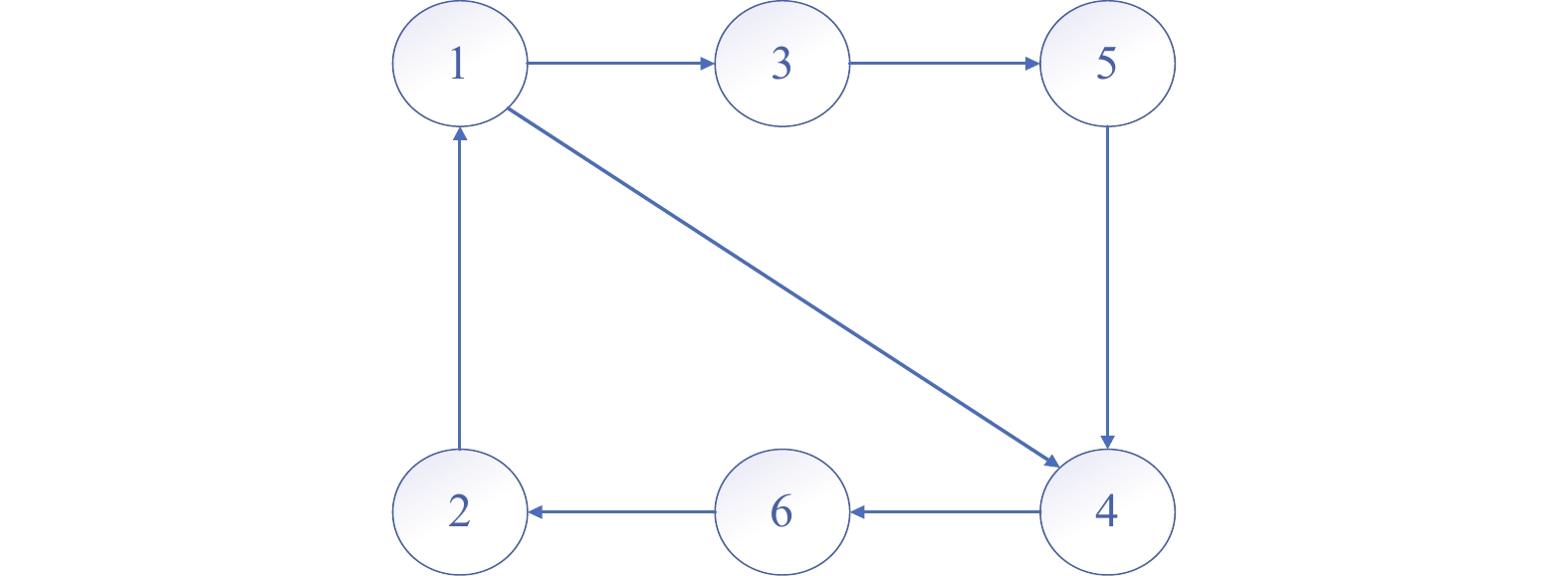|
[1]
|
QIAN Y C, ZHANG W, JI M M, et al. Observer-based positive edge consensus for directed nodal networks[J] . IET Control Theory & Applications,2020,14(2):352 − 357.
|
|
[2]
|
王庆领, 王雪娆. 切换拓扑下非线性多智能体系统自适应神经网络一致性[J] . 控制理论与应用,2023,40(4):633 − 640. doi: 10.7641/CTA.2022.10847
|
|
[3]
|
孙玉娇, 杨洪勇, 于美妍. 基于领航跟随的多机器人系统有限时间一致性控制研究[J] . 复杂系统与复杂性科学,2020,17(4):66 − 72.
|
|
[4]
|
YAN C H, ZHANG W, SU H S, et al. Adaptive bipartite time-varying output formation control for multiagent systems on signed directed graphs[J] . IEEE Transactions on Cybernetics,2022,52(9):8987 − 9000. doi: 10.1109/TCYB.2021.3054648
|
|
[5]
|
YAN C H, ZHANG W, LI X H, et al. Observer-based time-varying formation tracking for one-sided Lipschitz nonlinear systems via adaptive protocol[J] . International Journal of Control,2020,18(11):2753 − 2764.
|
|
[6]
|
YAN C H, ZHANG W, GUO H, et al. Distributed adaptive time-varying formation control for Lipschitz nonlinear multi-agent systems[J] . Transactions of the Institute of Measurement and Control,2022,44(2):272 − 285. doi: 10.1177/01423312211032036
|
|
[7]
|
WANG W K, ZHANG W, YAN C H, et al. Distributed adaptive bipartite time-varying formation control for heterogeneous unknown nonlinear multi-agent systems[J] . IEEE Access,2021,9:52698 − 52707. doi: 10.1109/ACCESS.2021.3068966
|
|
[8]
|
JIANG P W, ZHANG W, YAN C H, et al. Fully distributed event-triggered bipartite output formation control for heterogeneous MASs with directed graphs[J] . IEEE Transactions on Circuits and Systems-II: Express Briefs,2023,70(6):2072 − 2076. doi: 10.1109/TCSII.2022.3233370
|
|
[9]
|
BIDRAM A, LEWIS F L, DAVOUDI A. Distributed control systems for small-scale power networks: using multiagent cooperative control theory[J] . IEEE Control Systems Magazine,2014,34(6):56 − 77. doi: 10.1109/MCS.2014.2350571
|
|
[10]
|
KOELLER R. Toward an equation of state for solid materials with memory by use of the half-order derivative[J] . Acta Mechanica,2007,191(3/4):125 − 133. doi: 10.1007/s00707-006-0411-y
|
|
[11]
|
BAGLEY R L, TORVIK P J. On the fractional calculus model of viscoelastic behavior[J] . Journal of Rheology,1986,30:133 − 155. doi: 10.1122/1.549887
|
|
[12]
|
YE Y, SU H S. Consensus of delayed fractional-order multiagent systems with intermittent sampled data[J] . IEEE Transactions on Industrial Informatics,2020,16(6):3828 − 3837. doi: 10.1109/TII.2019.2930307
|
|
[13]
|
ZHU W, LI W, ZHOU P. Consensus of fractional-order multi-agent systems with linear models via observer-type protocol[J] . Neurocomputing,2017,230:60 − 65. doi: 10.1016/j.neucom.2016.11.052
|
|
[14]
|
YU W, CHEN G. On pinning synchronization of complex dynamical networks[J] . Automatica,2009,45(2):429 − 435. doi: 10.1016/j.automatica.2008.07.016
|
|
[15]
|
LI H L, HU C, JIANG Y L. Dynamical analysis of a fractional-order predator-prey model incorporating a prey refuge[J] . Journal of Applied Mathematics and Computing,2017,54:435 − 449. doi: 10.1007/s12190-016-1017-8
|
|
[16]
|
LI H L, JIANG H, CAO J. Global synchronization of fractional-order quaternion-valued neural networks with leakage and discrete delays[J] . Neurocomputing,2020,385(12):211 − 219.
|
|
[17]
|
VALCHER M E, MISRA P. On the stabilizability and consensus of positive homogeneous multi-agent dynamical systems[J] . IEEE Transactions on Automatic Control,2014,59(7):1936 − 1941. doi: 10.1109/TAC.2013.2294621
|
|
[18]
|
VALCHER M E, ZORZAN I. On the consensus of homogeneous multiagent systems with positivity constraints[J] . IEEE Transactions on Automatic Control,2017,62(10):5096 − 5110. doi: 10.1109/TAC.2017.2691305
|
|
[19]
|
LIU J J, LAM J, WANG Y. Robust and nonfragile consensus of positive multiagent systems via observer-based output-feedback protocols[J] . International Journal of Robust and Nonlinear Control,2020,30(14):5386 − 5403. doi: 10.1002/rnc.5090
|
|
[20]
|
WU H, SU H S. Observer-based consensus for positive multiagent systems with directed topology and nonlinear control input[J] . IEEE Transactions on Systems, Man, and Cybernetics: Systems,2018,49(7):1459 − 1469.
|
|
[21]
|
SUN Y, SU H S, WANG X. Semiglobal observer-based positive scaled edge-consensus of networked discrete-time systems under actuator saturation[J] . IEEE Transactions on Systems, Man, and Cybernetics: Systems,2021,51(7):4543 − 4554. doi: 10.1109/TSMC.2019.2944976
|
|
[22]
|
LIU J J, LAM J, ZHU B, et al. Nonnegative consensus tracking of networked systems with convergence rate optimization[J] . IEEE Transactions on Neural Networks and Learning Systems,2021,33(12):7534 − 7544.
|
|
[23]
|
LIU J J, YANG N. Positive consensus of fractional-order multiagent systems over directed graphs[J] . IEEE Transactions on Automatic Control,2022,34(12):9542 − 9548.
|
|
[24]
|
CHEN S Y, AN Q, YE Y, et al. Observer-based consensus for fractional-order multi-agent systems with positive constraint[J] . Neural Computing and Applications,2022,501:489 − 498.
|
|
[25]
|
SU H S, WU H, CHEN X, et al. Positive edge consensus of complex networks[J] . IEEE Transactions on Systems, Man, and Cybernetics: Systems,2018,48(12):2242 − 2250. doi: 10.1109/TSMC.2017.2765678
|
|
[26]
|
PODLUBNY I. Fractional differential equations: an introduction to fractional derivatives, fractional differential equations, to methods of their solution and some of their applications[M] . New York: Elsevier, 1998.
|
|
[27]
|
KACZOREK T. Fractional positive continuous-time linear systems and their reachability[J] . International Journal of Appled Mathematics and Computer Science,2008,18(2):223 − 228.
|
|
[28]
|
SHAFAI B, OGHBAEE A. Positive observer design for fractional order systems[C] //Proceedings of the 2014 World Automation Congress. Nanjing: IEEE Systems, Man, and Cybernetics Society, 2014: 531–536.
|
|
[29]
|
OLFATL-SABER R, FAX J A, MURRAY R M. Consensus and cooperation in networked multi-agent systems[J] . Proceedings of the IEEE,2007,95:215 − 233. doi: 10.1109/JPROC.2006.887293
|





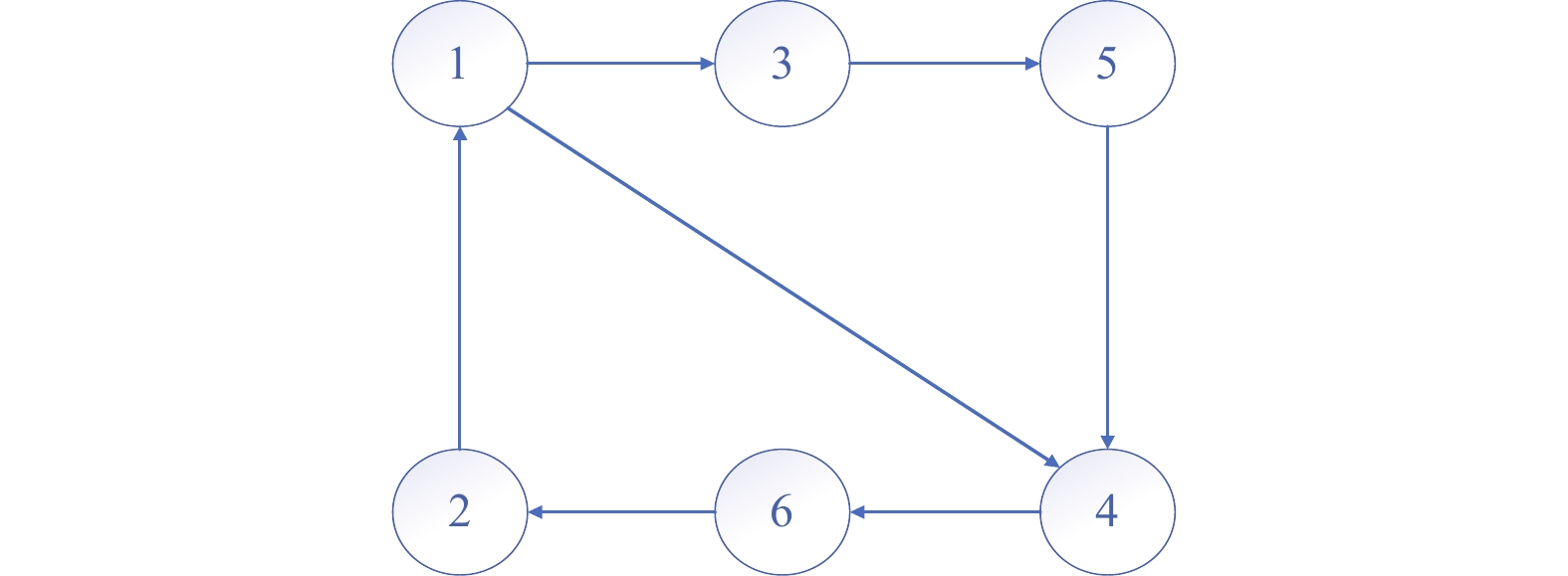
 下载:
下载:
